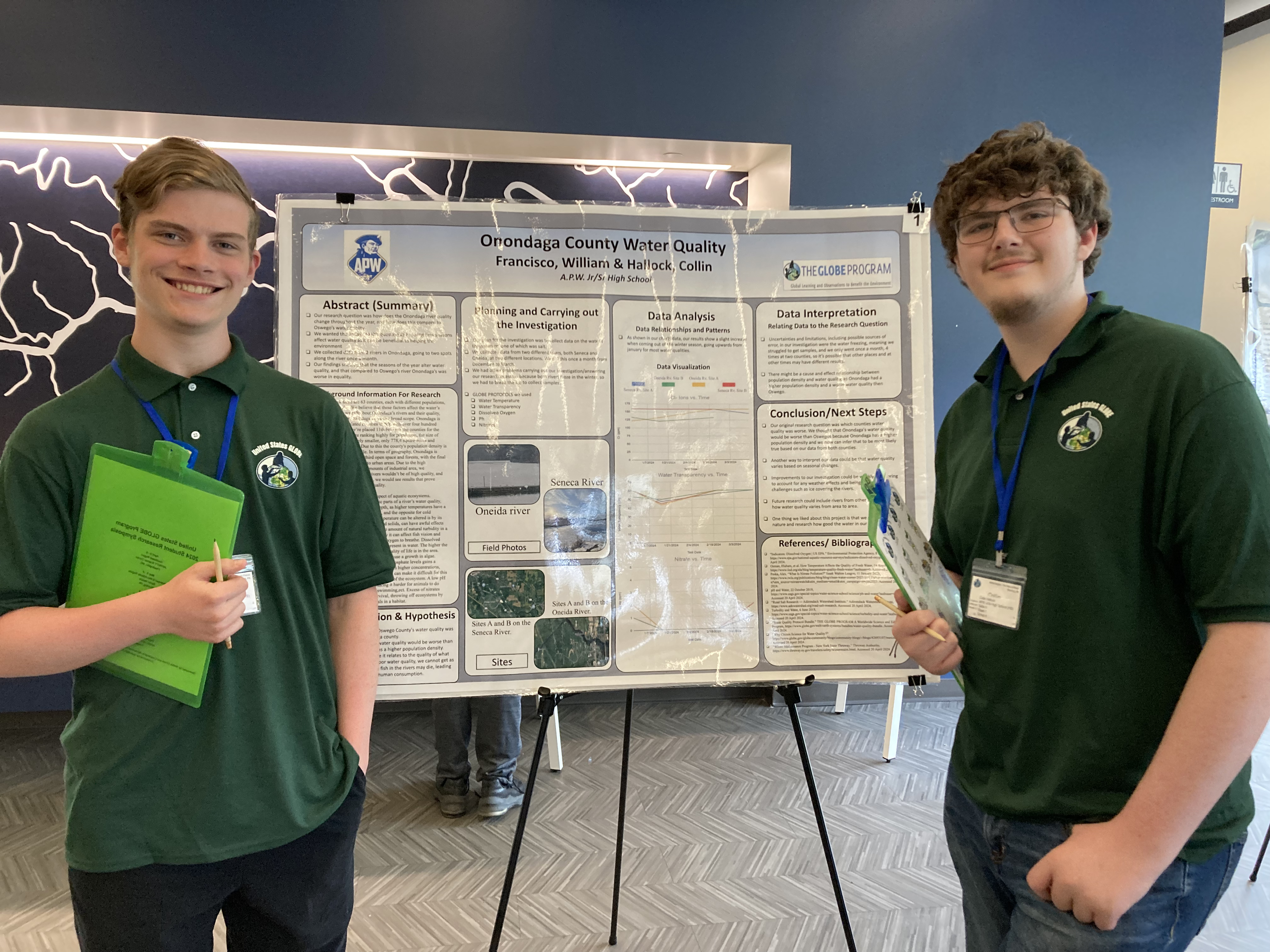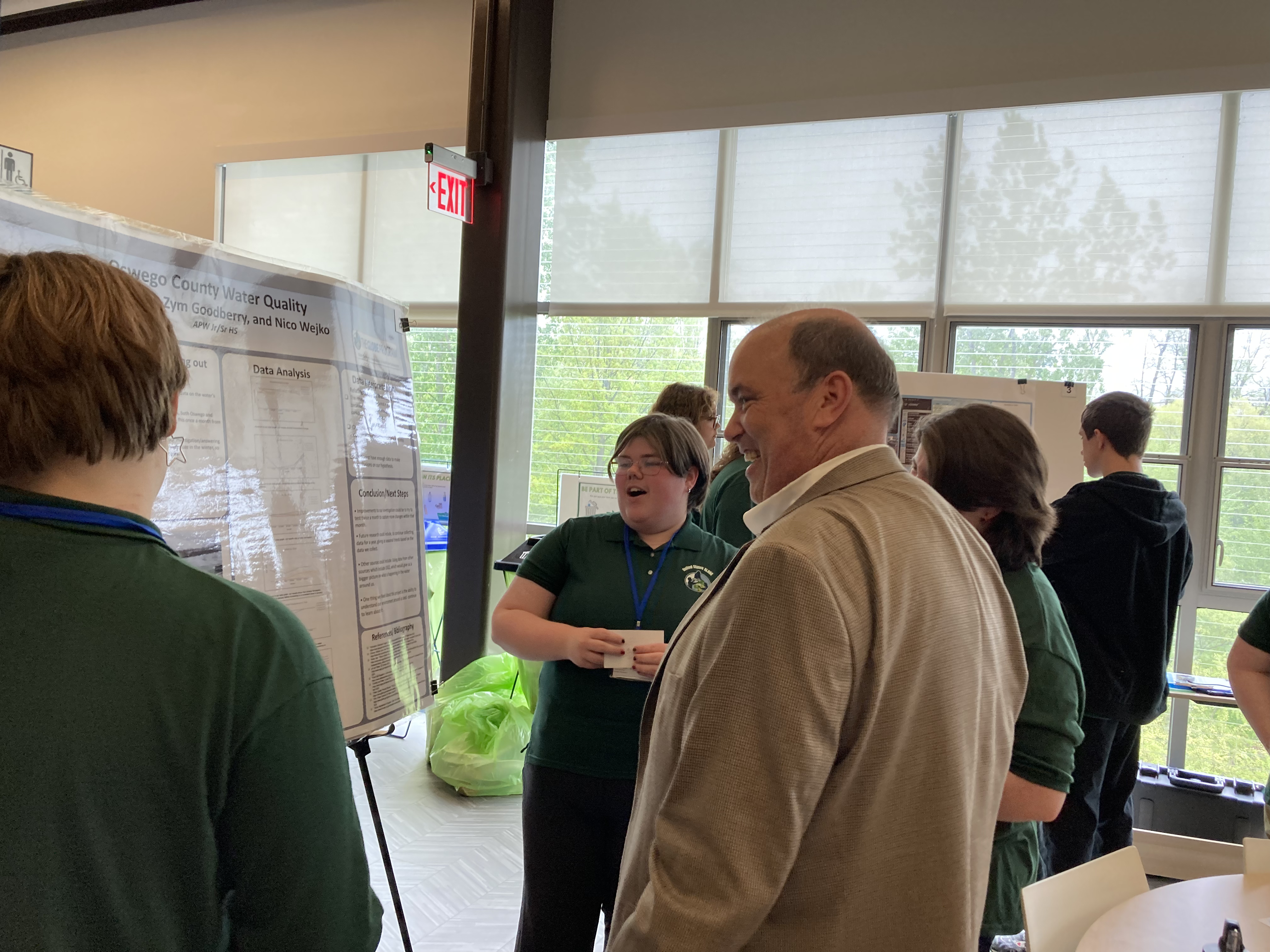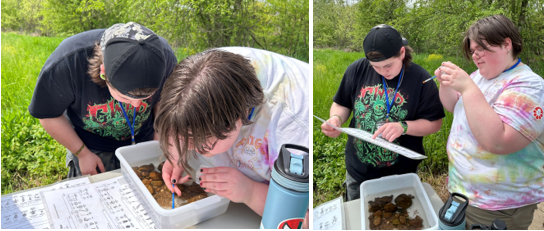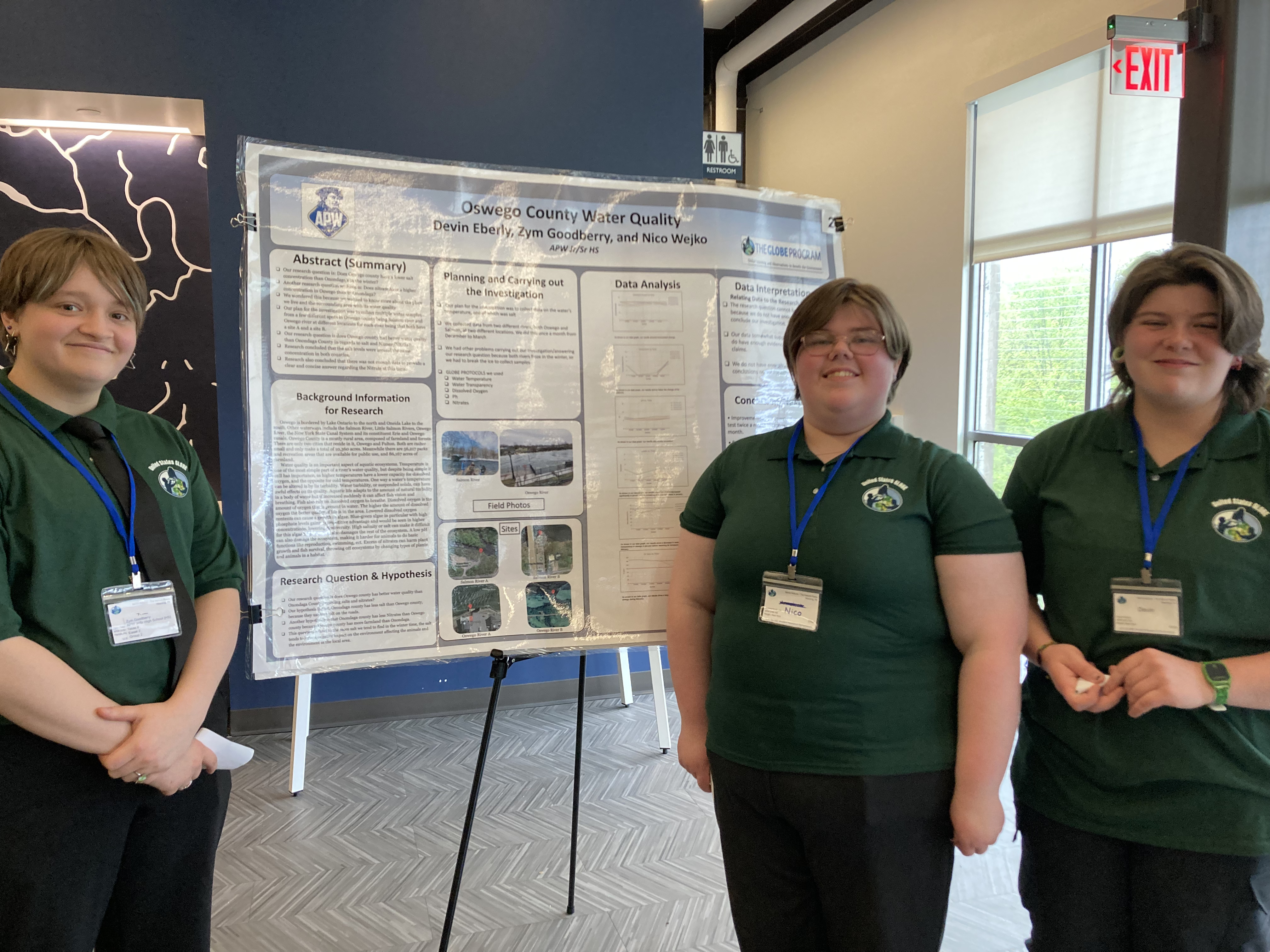Stars and STEM Stories
GLOBE United States: Students Enhance Their Existing Research Project with GLOBE Protocols
Students from Altmar-Parish-Williamstown (APW) Jr./Sr. High School in
Parish, NY, first started collecting water-quality data during their
geology class 2 years ago. They collected water from four different
rivers in two New York State counties to conduct various chemical
tests. Students enjoyed it so much that they wanted to continue as
part of the school’s Science Club.

William F. and Collin H. with their research poster, “Onondaga County Water Quality,” at the 2024 Northeast and Mid-Atlantic Student Research Symposium.
During this time, their science teacher, Jessica Halsey, attended
workshops to learn about GLOBE. Halsey explained to the students what
GLOBE was and how they could use existing GLOBE protocols to enhance
their data collection. Halsey’s students saw the benefits of the
protocols and began to use the dissolved oxygen, nitrates, pH, water
temperature, and water transparency protocols right away to expand
their research.

APW Jr./Sr. High School students present their research poster to Mike Jabot, SUNY Fredonia GLOBE partnership coordinator.
As the students proceeded with their water-quality research, Halsey suggested they present their data during the GLOBE Student Research Symposia (SRS). Students presented at the Northeast and Mid-Atlantic Region SRS at Berks Nature in Reading, Pennsylvania, on 3–4 May 2024. Their two projects—Oswego County River Quality and Onondaga County River Quality—were recognized for Community Impact and Engagement. The U.S. GLOBE office randomly chooses from the recognized projects for each regional event when inviting teams to the GLOBE Annual Meeting, and Halsey’s students were chosen.
Zym G., Nico W., and Devin E. with their research poster, “Oswego County Water Quality."
Five students from APW Jr./Sr. High School attended the meeting: Devin E., Zym G., Nico W., Collin H., and William F. At the meeting, the students presented their research to meeting attendees, which included STEM professionals and educators from around the world. The students also took part in the meeting’s Student Experience, where they learned about protocols they were not familiar with, including clouds, tree height, and soil temperature.

Devin E. and Nico W. observe and identify macroinvertebrates during the field session at Berks Nature (Reading, PA).
They also used the Hydrosphere protocols, getting a chance to conduct these tests in a different location from their own research. And the students learned about a test to detect E. coli in water, which they thought was “pretty cool” (while also gross because their water sample tested positive!). The students were then split into groups to create a presentation on what they learned at the Student Experience. They thought this part was interesting because they got to work with students from other schools, some of whom were from other countries.
Although the Science Club handles the GLOBE data collection now, Halsey’s geology class will be starting another project soon focusing on the surface temperature protocol.
Learn more about GLOBE United States.
Story courtesy of Jessica Halsey, GLOBE educator, Altmar-Parish-Williamstown (APW) Jr./Sr. High School in Parish, NY.
Photos courtesy of GLOBE North America Regional Coordination Office.






